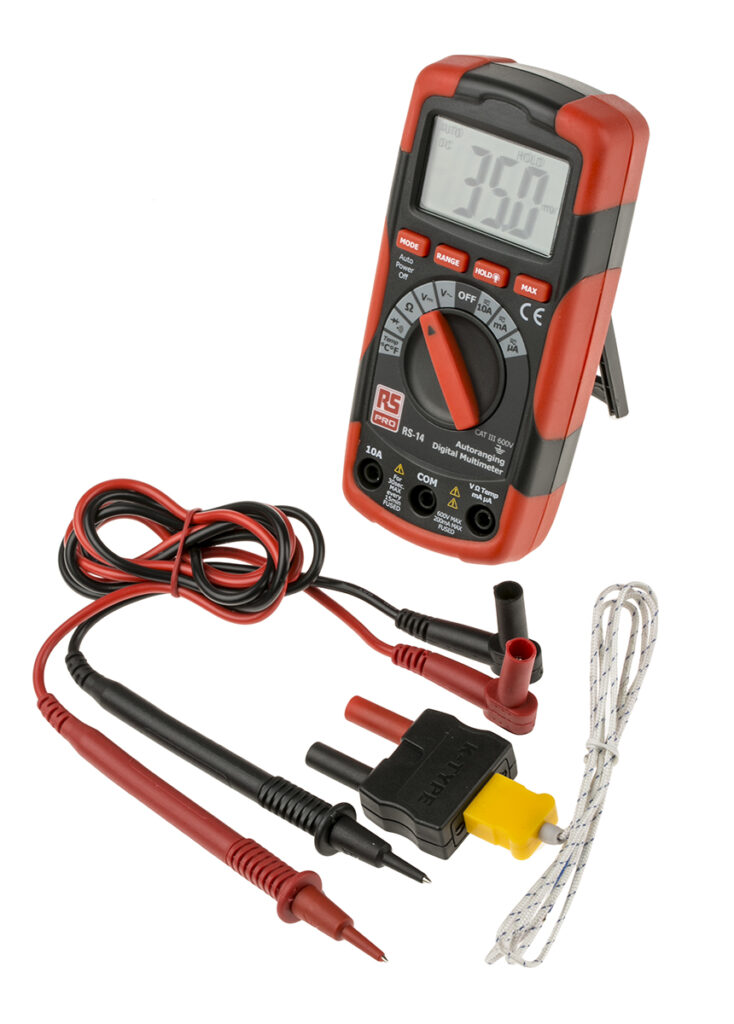
Introduction
In the world of electronics and electrical engineering, accurate measurements are essential. Whether you are troubleshooting a faulty circuit board, testing a power supply, or calibrating a sensor, precision instruments ensure safe and efficient outcomes. Among these instruments, the handheld digital multimeter (DMM) has become an indispensable tool for engineers, electricians, and hobbyists. Compact, versatile, and user-friendly, handheld digital multimeters allow professionals to perform a variety of tests in laboratories, industrial facilities, and even at home.
What is a Handheld Digital Multimeter?
A handheld digital multimeter is a portable measuring device designed to evaluate multiple electrical parameters such as voltage, current, and resistance. Unlike its analog predecessors, which relied on moving needles across a scale, digital multimeters provide instant readings on an LCD screen, offering higher accuracy and easier interpretation. Their lightweight design makes them practical for on-site inspections, fieldwork, and routine testing of electronic components.
Why Handheld Digital Multimeters Matter in Electronics
Electronics involves a wide array of components such as resistors, capacitors, diodes, transistors, microcontrollers, and power circuits. Faulty measurements can damage these sensitive devices or lead to misdiagnoses during troubleshooting. A handheld digital multimeter ensures:
- Accurate voltage testing for power supplies, batteries, and charging circuits.
- Current measurement to evaluate circuit performance or detect overloads.
- Resistance checks to identify faulty resistors, wires, or PCB traces.
- Continuity testing to confirm proper connections and detect open circuits.
This versatility is why every electronics laboratory, repair technician, and engineer includes a DMM in their toolkit.
Features of Handheld Digital Multimeters
Modern handheld digital multimeters are equipped with advanced features that extend their usefulness in both electronic and electrical applications:
- Auto-Ranging Function: Automatically selects the correct measurement range, eliminating manual adjustments and saving time.
- Data Hold Capability: Freezes the displayed measurement, allowing technicians to record values without repeating tests.
- Backlit LCD Display: Improves visibility in dim environments like server rooms, automotive panels, or industrial sites.
- Compact Size: Portable enough to fit in toolkits, making them ideal for field engineers and electricians.
- Multiple Measurement Modes: Some models measure capacitance, frequency, diode voltage drop, and even temperature using thermocouple probes.
Applications in Electronics and Electrical Engineering
Handheld digital multimeters are widely used across industries, thanks to their adaptability. Some prominent applications include:
- PCB Troubleshooting: Detecting faulty resistors, capacitors, and shorted semiconductor components.
- Power Electronics: Measuring current and voltage in converters, inverters, and power supplies.
- Automotive Electronics: Testing battery voltage, alternators, and sensor circuits in vehicles.
- Telecommunications Equipment: Ensuring correct voltage in routers, base stations, and switching systems.
- Consumer Electronics Repair: Diagnosing faults in smartphones, audio systems, and home appliances.
- Industrial Maintenance: Monitoring machinery control circuits, PLCs, and electrical motors.
In all these scenarios, handheld digital multimeters safeguard circuits while ensuring efficiency and reliability.
Advantages of Using Handheld Digital Multimeters
- Precision and Accuracy: Digital readouts minimize human error associated with analog scales.
- Portability: Lightweight design allows technicians to carry the device for field testing.
- Safety: Built-in overload protection and insulated probes reduce risks of electrical hazards.
- Versatility: Capable of measuring multiple electrical parameters with a single device.
- Cost-Effectiveness: Offers a wide range of testing functions at an affordable price compared to specialized instruments.
How They Differ from Bench Multimeters
While bench multimeters are stationary and often more precise, handheld digital multimeters strike a balance between accuracy and convenience. Bench models are ideal for laboratories and advanced research, but handheld versions are more practical for electricians, service engineers, and maintenance teams who need portability and quick access to results in the field.
Technological Innovations in Handheld Digital Multimeters
With advancements in electronics, handheld digital multimeters have evolved significantly. Newer models now feature:
- Bluetooth Connectivity: Syncing readings with smartphones or laptops for easy data logging.
- True RMS Measurement: Accurate readings of AC signals, especially when dealing with non-linear loads in power electronics.
- Auto Power-Off: Conserves battery life during extended fieldwork.
- Rugged Housing: Shockproof and dust-resistant casings for industrial environments.
- Integrated Safety Ratings: Compliance with IEC and CAT standards for high-voltage environments.
These innovations ensure handheld multimeters remain relevant in fast-changing electronic and electrical industries.
Choosing the Right Handheld Digital Multimeter
Selecting the right handheld digital multimeter depends on several factors:
- Measurement Range: Ensure it covers the voltage, current, and resistance levels you frequently test.
- True RMS Capability: Important for accurate AC measurements in modern electronic systems.
- Safety Category (CAT Ratings): Choose CAT II, CAT III, or CAT IV depending on whether you work with household circuits, distribution boards, or high-voltage industrial systems.
- Durability: Look for rugged designs with protective casings for field use.
- Additional Features: Capacitance, frequency, and diode testing expand the tool’s versatility in electronics.
Importance in Education and DIY Electronics
Beyond professional environments, handheld digital multimeters are widely used by students, researchers, and hobbyists. They are vital in electronics labs at universities where learners study circuit behavior, test semiconductors, or measure signals. DIY enthusiasts also rely on DMMs for home projects, from building IoT devices to repairing household appliances.
Conclusion
The handheld digital multimeter is much more than a simple measurement tool; it is the backbone of diagnostics, maintenance, and innovation in electronics and electrical engineering. Its portability, accuracy, and multipurpose functionality make it a must-have instrument for professionals and enthusiasts alike. As technology advances, these devices continue to evolve with features like connectivity, improved safety, and advanced measurement modes, ensuring they remain integral in modern electronics.
For engineers, electricians, and students, investing in a quality handheld digital multimeter means investing in accuracy, safety, and efficiency. Whether you’re working on delicate PCB circuits, testing industrial machinery, or exploring hobby electronics, this tool ensures reliable performance every time.


